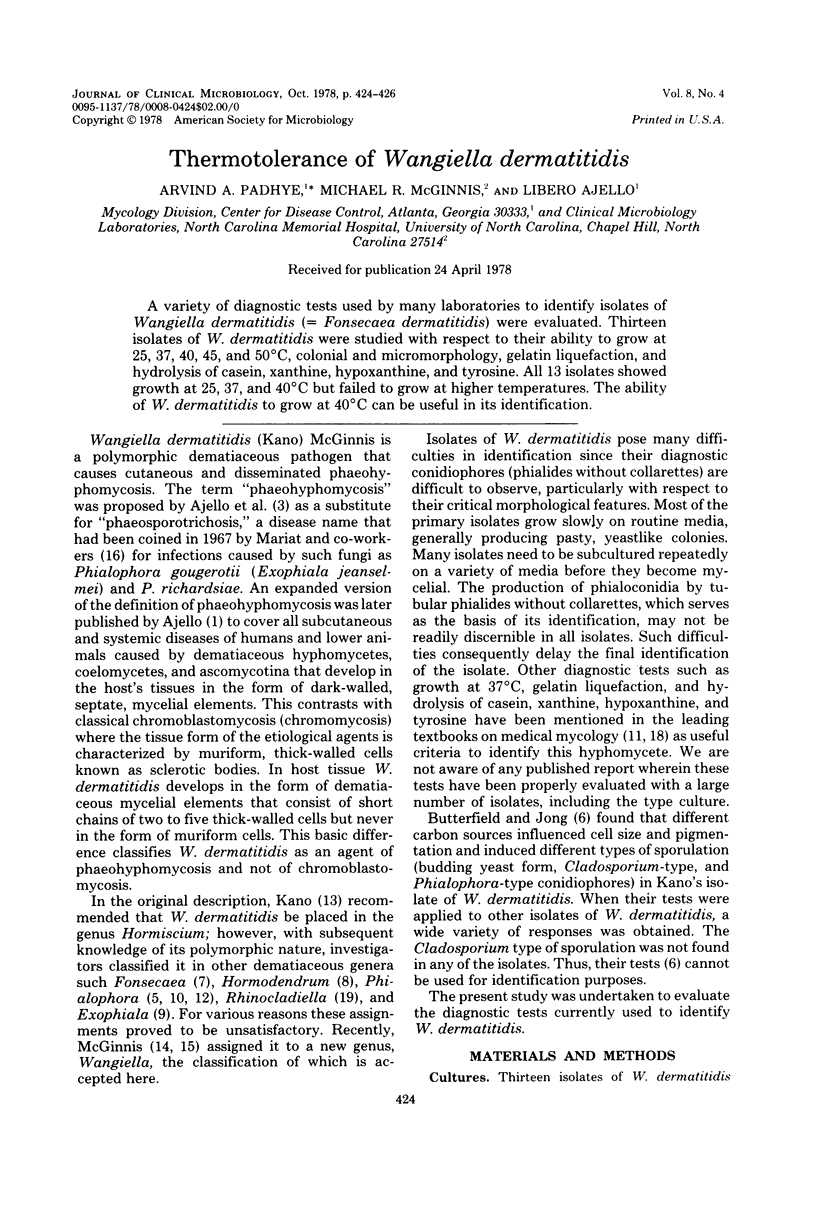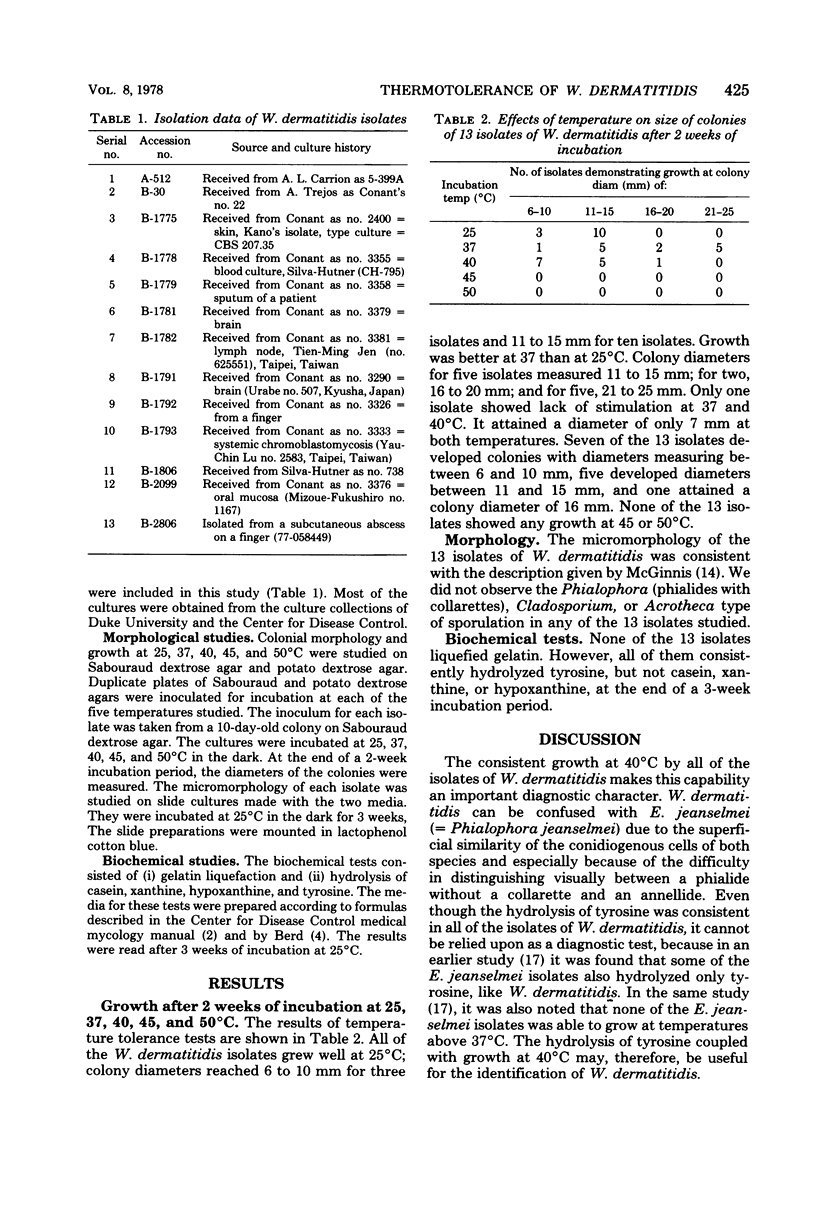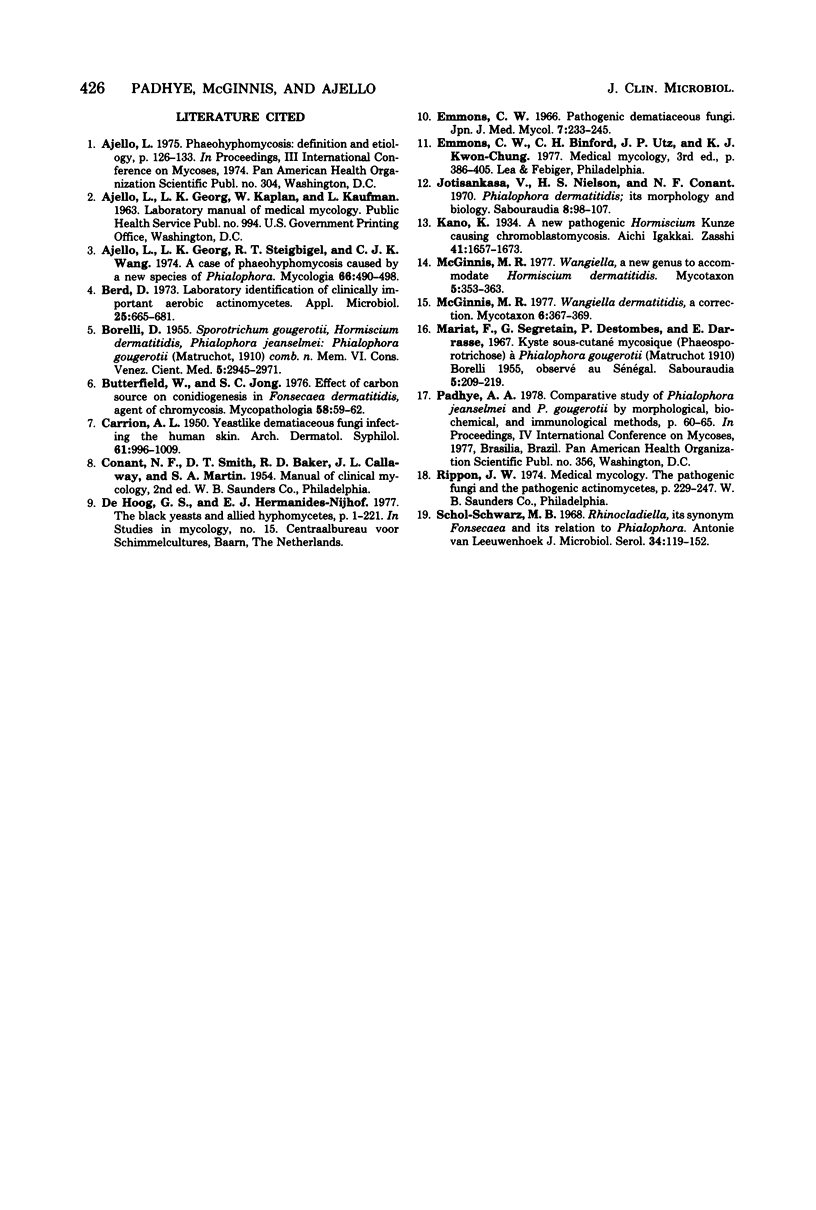Abstract
A variety of diagnostic tests used by many laboratories to identify isolates of Wangiella dermatitidis (= Fonsecaea dermatitidis) were evaluated. Thirteeen isolates of W. dermatitidis were studied with respect to their ability to grow at 25, 37, 40, 45, and 50 degrees C, colonial and micromorphology, gelatin liquefaction, and hydrolysis of casein, xanthine, hypoxanthine, and tyrosine. All 13 isolates showed growth at 25, 37, and 40 degrees C but failed to grow at higher temperatures. The ability of W. dermatitidis to grow at 40 degrees C can be useful in its identification.
Full text
PDF


Selected References
These references are in PubMed. This may not be the complete list of references from this article.
- Ajello L., Georg L. K., Steigbigel R. T., Wang C. J. A case of phaeohyphomycosis caused by a new species of Phialophora. Mycologia. 1974 May-Jun;66(3):490–498. [PubMed] [Google Scholar]
- Berd D. Laboratory identification of clinically important aerobic actinomycetes. Appl Microbiol. 1973 Apr;25(4):665–681. doi: 10.1128/am.25.4.665-681.1973. [DOI] [PMC free article] [PubMed] [Google Scholar]
- Butterfield W., Jong S. C. Effect of carbon source on conidiogenesis in Fonsecaea dermatitidis, agent of chromomycosis. Mycopathologia. 1976 Jun 4;58(1):59–62. doi: 10.1007/BF00493594. [DOI] [PubMed] [Google Scholar]
- CARRION A. L. Yeastlike dematiaceous fungi infecting the human skin; special reference to so-called Hormiscium dermatitidis. Arch Derm Syphilol. 1950 Jun;61(6):996–1009. doi: 10.1001/archderm.1950.01530130114017. [DOI] [PubMed] [Google Scholar]
- Jotisankasa V., Nielsen H. S., Jr, Conant N. F. Phialophora dermatitidis; its morphology and biology. Sabouraudia. 1970 Aug;8(2):98–107. doi: 10.1080/00362177085190711. [DOI] [PubMed] [Google Scholar]
- Mariat F., Segretain G., Destombes P., Darrasse H. Kyste sous-cutané mycosique (phaeo-sporotrichose) à Phialophora gougerotii (Matruchot 1910) Borelli 1955, observé au Sénégal. Sabouraudia. 1967 Feb;5(3):209–219. [PubMed] [Google Scholar]
- Schol-Schwarz M. B. Rhinocladiella, its synonym Fonsecaea and its relation to Phialophora. Antonie Van Leeuwenhoek. 1968;34(2):119–152. doi: 10.1007/BF02046424. [DOI] [PubMed] [Google Scholar]


